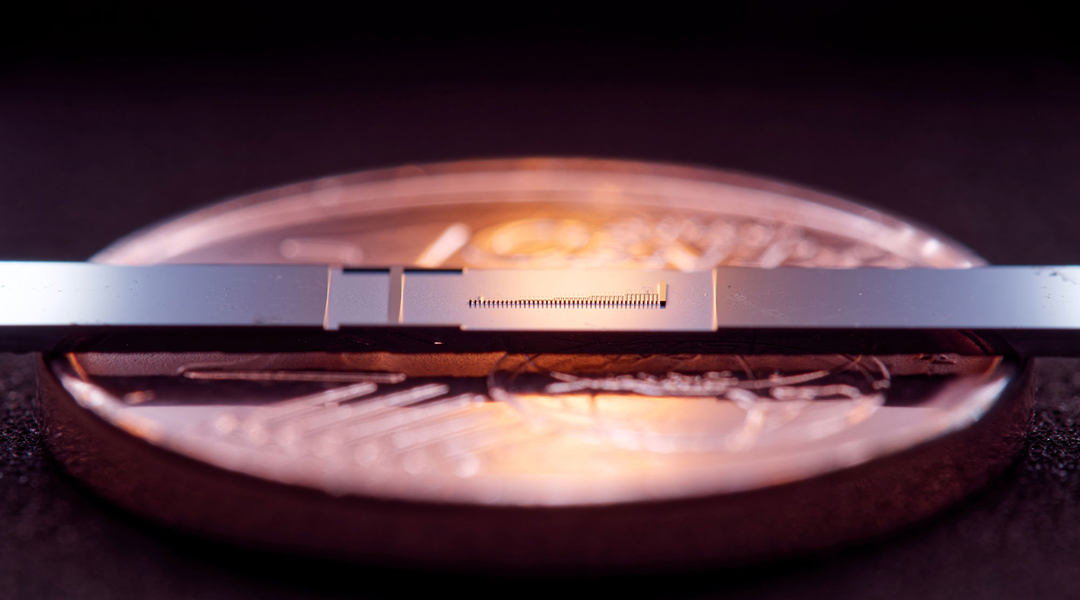Ask the general public about particle accelerators and the maxim “bigger is better” may well come to mind. That isn’t difficult to understand when the most famous, powerful, and arguably the most useful particle accelerator is the Large Hadron Collider, a 27 km tunnel under the border between France and Switzerland — definitely the largest particle accelerator ever built and the largest science experiment ever constructed.
Yet scientists and engineers know that size isn’t everything when it comes to particle accelerators. Work has been underway for decades to produce smaller and smaller versions that won’t require miles of chambers to be hollowed out under the Alps.
Scaling down
Particle accelerators are vital tools in industry, in a wide range of research topics like particle and nuclear physics, and are even useful in the medical sector for applications, like medical imaging and producing radiation to treat tumors. Many of these applications don’t need huge machines like the Large Hadron Collider that can accelerate particles, like protons, to near-light speed and smash them together.
That means there are significant advantages to having particle accelerators that can fit within buildings, laboratories, and even on table tops, but these machines can still be bulky and occupy several square meters of valuable space. Additionally, particle accelerators of these sizes still suffer from performance issues.
Particle accelerators that can use lasers to accelerate electrons to relativistic speeds — speeds approaching that of light — through tiny “nanoscale” structures called “nanophotonic accelerators” are a cheap and less bulky alternative to even the smallest particle accelerators currently available. The issue with these mini-particle accelerators is that electrons accelerated throughout them don’t display significant energy gains, meaning they aren’t being accelerated significantly.
That was until recently when a team of laser physicists from Friedrich-Alexander-Universität Erlangen-Nürnberg (FAU) finally used such a nanoscale device to accelerate electrons and obtain a significant energy gain.
What is exciting about the particle accelerator the FAU team developed is it is so small it fits on a one cent coin. In other words, at 0.5 millimeters in length and with a width of 225 nanometers, this is a particle accelerator on a computer chip. The team’s research is documented in a paper published in the journal Nature.
“For the first time, we really can speak about a particle accelerator on a chip,” one of the paper’s authors, Roy Shiloh, a laser physicist at FAU, said in a statement from the institution.
Building a mini particle accelerator one step at a time
The groundwork for the development of this successful nanophotonic accelerator was laid by the team over two years ago when they controlled the flow of electrons in a vacuum using a technique called alternating phase focusing.
With that achieved, the team next had to do it in a way that allowed the electrons to gain energy. They did that by combining alternative phase focusing with nano-structures with a pillar-like shape. The electrons accelerated in this way gained 12-kilo electron volts (keV) — which is a change in energy equivalent to moving 12,000 electrons across an electric potential difference of one volt. This is a tiny amount of energy, but it still represents a 43% energy gain for the accelerated electrons.
“Using this technique, we have now succeeded not only in guiding electrons but also in accelerating them in these nano-fabricated structures over a length of half a millimeter,” FAU researcher Stefanie Kraus said.
The FAU team will now try to increase the amount of energy gained by electrons by a factor of around 100 to make this nano-particle accelerator apt for medical applications. This will require expanding the novel structures used in this test and placing several 0.5 millimetre nano-channels together.
“The dream application would be to place a particle accelerator on an endoscope in order to be able to administer radiotherapy directly at the affected area within the body,” paper author and FAU scientist Tomáš Chlouba said.
The FAU laser scientists will also continue to work with researchers at Stanford University who themselves recently made a similar nano-accelerator breakthrough, as part of the “Accelerator on a Chip” initiative funded by the Gordon and Betty Moore Foundation. The aim of the project is to take revolutionary approaches to particle accelerator design and make these designs a reality.
Reference: Tomáš Chlouba, et al., Coherent nanophotonic electron accelerator, Nature, (2023), DOI: 10.1038/s41586–023–06602–7
Feature image credit: FAU/Laser Physics, Stefanie Kraus, Julian Litzel

















